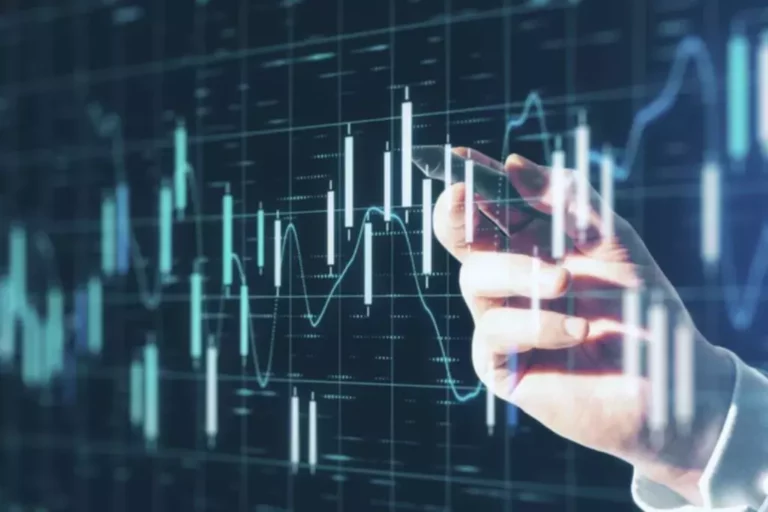As the cryptocurrency market matures, the mechanisms that drive buying and selling volume and liquidity on DEXs turn out to be important for the sustainability and effectivity of the market. This research is particularly well timed and relevant because it explores progressive strategies past conventional methods to draw users and traders to the platform. DEXs depend on automated market makers (AMMs) and good contracts to adjust token prices in actual time, resulting in more dependable valuations.
Decrease trading fees can appeal to more traders and increase volume, however additionally they have to be sufficient to incentivize liquidity provision and platform upkeep. The charge construction and revenue sharing models employed by a DEX instantly influence its competitiveness and talent to attract quantity. Nevertheless, in a extremely liquid market, there are usually sufficient purchase and sell orders obtainable to accommodate massive trades at consistent prices, thereby minimizing slippage. This is essential for merchants, especially those who deal in massive volumes or interact in high-frequency trading, because it directly impacts their profitability.

Determine between traditional order book systems, that are acquainted to many traders, and AMM fashions, which offer liquidity through good contracts. Hashflow 53 is a multichain DEX that permits customers to trade digital belongings on main blockchains together with Ethereum, Arbitrum, Avalanche, BNB Chain, Optimism, Polygon, and Solana in just a matter of seconds. The idea of “DeFi Wars,” particularly the “Curve Wars,” represents a significant phenomenon within the DeFi ecosystem, focusing on the battle for liquidity amongst varied protocols. To scale this activity, the trader would possibly use automated buying and selling bots to execute these trades rapidly and at varied occasions to mimic actual buying and selling activity. In the next sections there will be introduced instruments for creation of trading simulation.
How Do Automated Market Makers (amms) Help Determine Costs On Decentralized Exchanges?
The emergence of cross-chain interoperability options has facilitated the execution of arbitrage opportunities throughout completely different blockchains. This has opened up new prospects for merchants to have interaction in worthwhile methods that span a quantity of chains, thereby growing the potential for arbitrage opportunities and market efficiency 11. Moreover, sturdy buying and selling activity highlights person engagement and trust in the token, signaling its potential for long-term market success. This often serves as a green light for institutional investors, encouraging their involvement and helping to stabilize the broader market. DEX trading quantity performs an important position in shaping token economies, providing insights that conventional metrics typically overlook.
For traders and liquidity suppliers, understanding these elements is essential for navigating the DeFi landscape successfully. By recognizing what drives liquidity, individuals can make better-informed selections, optimize their methods, and contribute to a healthier buying and selling surroundings. DEX Arbitrage involves exploiting worth differences throughout numerous crypto exchanges to increase trading quantity.
- By understanding these elements and their implications, entrepreneurs and developers can navigate the complexities of DEX development successfully.
- This ecosystem of interrelated protocols and incentives attracts more customers and liquidity providers to the Curve platform, contributing to its development and the overall DeFi ecosystem 4344.
- This value efficiency, coupled with the enhanced security and self-custody provided by DEXs, is driving traders to maneuver away from centralized exchanges.
- These elements collectively contribute to the general objective of increasing trading volume and liquidity on DEXs.
- Additionally, low liquidity could make the market more prone to price manipulation.
As a outcome, arbitrageurs usually have a tendency to commerce on DEXs with greater liquidity, which in turn can drive up buying and selling quantity. This setup permits permissionless trading, meaning anyone can commerce tokens while not having a intermediary Volume on a DEX. By leveraging sensible contracts, AMMs continuously balance liquidity and pricing, creating a seamless and efficient buying and selling course of for users.
Governance tokens enable neighborhood members to suggest and vote on project modifications https://www.xcritical.com/, enhancing user engagement and guaranteeing helpful platform evolution. Voting rights granted by these tokens permit holders to affect protocol upgrades and new characteristic implementations. Privacy and anonymity are important factors driving the popularity of decentralized exchanges.
For instance, on June 17, 2025, the whole 24-hour buying and selling volume throughout 970 decentralized exchanges hit $11.eight billion, with DeFi quantity accounting for 9.9%. To understand where a project suits into this ecosystem, constant monitoring is essential. Uniswap expenses a 0.3% fee on trades, with the complete amount going to liquidity suppliers. SushiSwap applies a 0.5% charge, splitting half with liquidity suppliers and utilizing the other half to purchase again SUSHI tokens. Curve Finance expenses a decrease payment of 0.04%, relying on excessive buying and selling volumes to make up for the smaller share.
Liquidity is a vital facet of any trading platform, and decentralized exchanges are not any exception. Liquidity pools on DEXs rely on user contributions, which can cause fluctuations in available liquidity primarily based on participation. Despite these challenges, DEXs have managed to take care of excessive liquidity levels, with main platforms like Uniswap commanding over half of the whole DEX buying and selling quantity. Many DEXs make the most of native tokens and liquidity mining programs to incentivize liquidity provision and bootstrap preliminary volume. By rewarding customers with tokens for offering liquidity or buying and selling on the platform, DEXs can appeal to early adopters and stimulate buying and selling exercise.

Dex Quantity Reaching Ath: A Model New Period In Crypto Trading?
While the Curve Wars have contributed to the growth of Curve’s liquidity and trading volume, they also expose the platform and its members to sure dangers. The intense give consideration to accumulating veCRV can result in centralization issues, where a couple of giant holders have disproportionate affect over the platform’s governance 4044. Moreover, the aggressive dynamics can result in advanced incentive structures that could be difficult for new customers to navigate 42. DEX trading quantity performs an important function in shaping token prices and gauging market sentiment. Here’s how buying and selling quantity reflects demand, drives valuation cycles, and contributes to cost discovery.

Buying And Selling Exercise Simulation refers back to the apply of simulating trading activity to artificially increase quantity on a DEX. Web3 projects can faucet into DEX trading quantity knowledge to fine-tune their tokenomics by understanding liquidity, market interest, and trading patterns. High trading volumes typically point to robust demand and active consumer engagement, offering useful clues for shaping strategies that improve token utility and promote long-term holding. Leveraging DEX (decentralized exchange) quantity information can turn theoretical tokenomics ideas into actionable, market-savvy methods.
Nevertheless, the long-term sustainability of those token incentives is a key consideration. Inflationary tokenomics or unsustainable reward mechanisms can result in token price depreciation and finally undermine the effectiveness of those incentives in driving volume. In AMMs, arbitrageurs continually monitor price discrepancies between DEXs and other exchanges (both DEXs and CEXs). When worth imbalances occur Decentralized autonomous organization, arbitrageurs execute trades to profit from these differences, bringing costs back into alignment. The selection of DEX structure – AMM or order guide – considerably shapes the mechanics of volume era and the elements that affect it.




